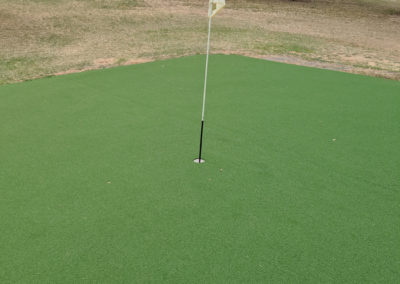The History Of The Golf Tee The history of the golf tee dates back to the 1500's. The practice of getting sand wet with a towel and mounding up earth to get the ball off the ground a little went on for some 300 years. The late 1800's changed all that. This is the...
Sand Green Golf
Sand Green Golf
I grew up in regional Australia and I was visiting my home town over Christmas and I took a drive around all the golf courses I had played as a junior and amateur golfer around my home town. In Australia all little towns seem to have a golf course as part of the sporting facilities of the town. I grew up in a town of around 50,000 people and we had three golf courses in the town itself. There was another golf course in the twin town across the river as well as a number of other courses within 45 minutes’ drive. There are also several little sand green courses in the nearby towns which is what this post is about.
Some of these towns have populations ranging from a few hundred to maybe 1500 and yet they all have a golf course that can be used by the local residents. Now this is where it gets a little interesting! As these towns are very small and there are not many members of the clubs there is not a lot of money to be spent on the courses. There are no course staff to maintain the course and all the work is done by the golfers and volunteers. They are very friendly clubs and when you play golf there you are always guaranteed a fun time with lots of country hospitality.
Another little quirk of these courses is the greens. There is no money or staff to maintain grass greens, so these courses have sand greens which are sometimes called sand scrapes. It is a weird feeling to be aiming to hit the ball in the sand for a change!
Sand greens are traditionally small and hard so hitting greens in regulations is a challenge. You can’t land the ball on the green surface on the full unless you want to end up 50 yards over the green. You need to hit shots that land short and bounce onto the green. Uneven bounces combined with small putting surfaces makes it hard to have too many birdie putts.
Once you manage to get the ball on the green the “scrape” section of sand scrapes come into play. You mark your ball by drawing a line in the sand level with your ball and then use the provided “smoother” to scape a smooth path to the hole from your mark. You need to go past the hole and keep an even pressure during your scrape. You are allowed to scrape twice, in opposite directions, on each putt. You then place the ball in the middle of the scraped path in even with your line and putt away. There is usually not too much break on sand greens, and they are normally slower than grass greens so you will see a lot of one putt greens, especially from seasoned sand green players. I can remember losing a tournament to a sand green player who had something like 22 or 23 putts for the 27 holes of the tournament.
I took these photos that you can see in the post during Summer and these courses obviously don’t have any watering systems. They rely on mother nature to provide rain to green up the fairways, so golf is a Winter sport in these country towns.
One of courses in the photos has invested in synthetic grass for their greens and this cuts down on maintenance and allows for a couple of pin positions on each green. Most sand green courses have the hole in the middle of the green and that is where it stays. I haven’t played this course since they changed to synthetic, but I am told that they still play a lot like sand greens, so you still need to land the ball short and run it on.
Sand green golf is a lot of fun as you must play different shots and you don’t tend to play too many high wedge shots. You play lots of chip and run shots and you get to be nice and aggressive on your putts as they don’t run too far past generally. Let me know in the comments if you have any questions about sand green golf and where is the strangest place you have played golf.
Until next time,
Brent Davis

Brent Davis
PGA Professional
Training & Education Coordinator
PGA Centre For Learning Performance
Melborne, Victoria, Australia
Email: [email protected]
Backspin Archives
The History Of The Golf Tee
The Claret Jug
The Claret Jug The first British Open was contested in 1860 at Prestwick Golf Club and stayed there for some 11 years. Originally the winner of the British Open received something called the “Challenge Belt.” The Challenge Belt was created by the Earl of Eglinton. ...
TEAM MFG BLOG
Subscribe
Never miss a new post, article, or video!
Subscribe to our newsletter Chip Shots!
























